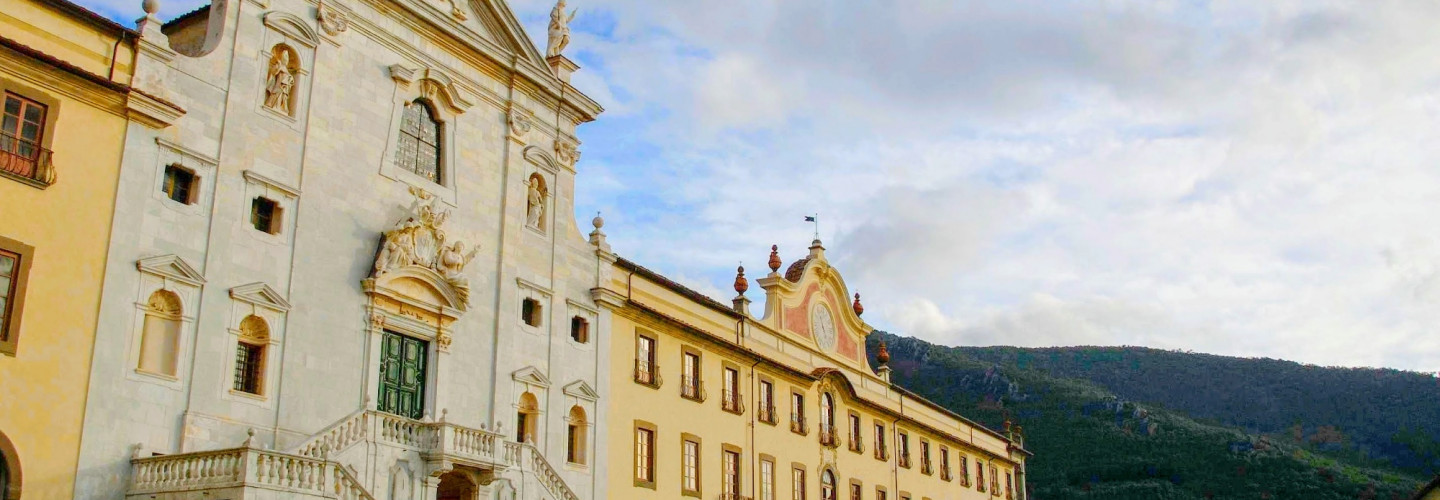Calci Charterhouse

The monastery is known for the fresco of the Last Supper, by Bernardino Poccetti (1597), in the refectory.
The Carthusians founded a monastery in 1366/67 in what is called Val Graziosa, a plain overlooked by the Monti Pisani (“Pisan Mountains”), when Francesco Moricotti Prignani was archbishop of Pisa. Shortly afterwards Pope Gregory XI, a noted reformer of monasteries, expelled the monks from the Benedictine Gorgona Abbey, on the island of Gorgona, and gave the island and the estate to the Carthusians of Val Graziosa, who repopulated them. This event must have happened not long before Catherine of Siena’s visit of 1375, as she mentions in her letters the need to convert the facilities for the Carthusian use. Benedictines were barred from the island.
In 1425, the Mediterranean reached a peak of political instability. The peace and safety of the monks on Gorgona could no longer be assured. Fearing a Saracen attack they abandoned the monastery and took up residence at Calci, bringing the records from Gorgona with them, to be duly published at Pisa.
In the 17th and 18th centuries, the complex was renovated, receiving its current Baroque appearance.
In November 1946, following World War II, conventuals from the Netherlands gradually started to repopulate the building that had been heavily damaged during the war years. It was thought and hoped that the institution of a Dutch Carthusian monastery in Italy could one day lead to the re-establishment of a Carthusian monastery in the Netherlands, a country from which the order had been absent since the late eighteenth century. Lack of funds, lack of novices and internal strife would eventually cause the Dutch to abandon their project in the early nineteen-sixties.
In 1981, the University of Pisa moved its natural history museum here. The collection had been started in Pisa in the 16th century as a collection of curiosities connected to the Giardino dei Semplici. It now houses one of the largest collection of cetaceans skeletons in Europe, while halls dedicated to dinosaurs are being set up.

